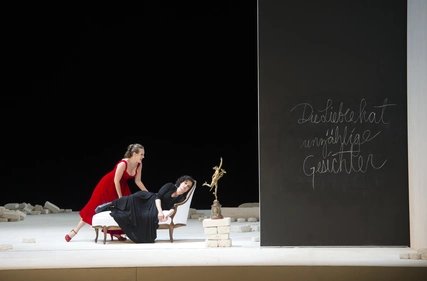
Staatsoper Unter den Linden
Refurbishing a renowned heritage opera house
Explore 250 years of opera history! While Berlin’s Staatsoper Unter den Linden is extensively renovated, take a peek behind the scenes on a special tour.
Over 250 years of tradition
Today’s Staatsoper Unter den Linden, one of the most attractive buildings on Berlin’s historic boulevard, was originally the court opera house commissioned by no less a figure than Frederick the Great. Designed by architect Georg Wenzeslaus von Knobelsdorff, the opera house was constructed from 1741 to 1743.
Rightly renowned for his patronage of the arts and sciences, Frederick had the court opera house integrated into his larger Forum Fridericianum project, creating a new urban centre with a library, cathedral and palace. The neo-classical opera house, which resembles an ancient temple, was Germany’s first free-standing opera house and the largest in Europe at the time.
In a disastrous fire in 1843, the opera house was nearly burnt to the ground. Architect Carl Ferdinand Langhans was then entrusted with the task of rebuilding the opera house on the same site. During the Second World War, the building suffered extensive and severe damage. In the 1950s, the East German government then launched a scheme to rebuild the opera house following Knobelsdorff’s original plans.

Hosting great names in the history of music
Down the centuries, many illustrious composers and conductors have been associated with the opera house, including:
- Carl Heinrich Graun
- Giacomo Meyerbeer
- Felix Mendelssohn Bartholdy
- Richard Strauss
- Wilhelm Furtwängler, and
- Herbert von Karajan.



